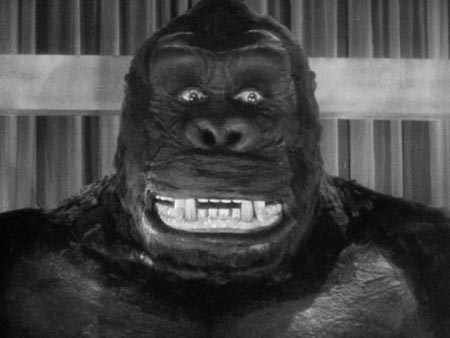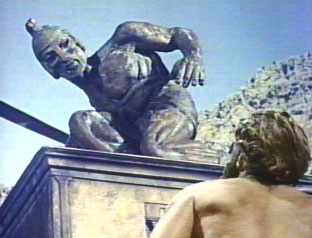
I've never seen King Kong (1933) except for a short snippet from the fight sequence with Kong against a T Rex. I have seen the remake before now and the two seem almost exactly the same. The effects in the original, although don't compare to the remake, but they are still amazing to watch. Willis O'Brien was the animator behind this film. The quality of animation is good although I think The Mascot is slightly better. Both films integrated the live action footage with the animation extremely well. The main thing I liked about the original King Kong was that, having seen the remake already, I expected it to be a less technically amazing film, thinking that I wouldn't enjoy it as much. I was wrong. It was technically amazing for its time, and I still enjoyed it.

This was the only thing I found laughable.

This is where CG does improve things.

The last film we saw was Jason and the Argonauts (1963).

What all three of these films have in common is stop motion. Jason and the Argonauts does not disappoint. In fact, it surpasses both King Kong and The Mascot. The quality and intricacy of the animation improves over the course of the whole film. Ray Harryhausen was the animator in this film.
In all honesty, I genuinely wasn't expecting the statue to come to life. From here on the animation and effects get better. Better than I was expecting anyway.

Ray Harryhausen was not only was inspired by Willis O'Brian (animator of King Kong) but was also mentored by him.
Harryhausen said in an interview (http://www.brightlightsfilm.com/58/58harryhauseniv.html) that his favorite creations are the complicated ones. The skeletons are definitely the highlight of the film. I was amazed at the complexity of the scenes. Even in CG I can imagine this being a difficult task to not only animate but composite. This makes the scenes at the end of The Terminator look simple.

Image from The Terminator (1984)

Having already seen the skeletons in a short clip before, I already knew how impressive they were. The thing which caught my eye in this film was when the... well I don't know its name... held the two walls open with the ship sailing beneath it. The mere fact that the giant guy was moving in slow motion helped in giving it huge size in comparison to the ship. It was definitely the most epic part of the film. Although he wasn't animated.


No comments:
Post a Comment